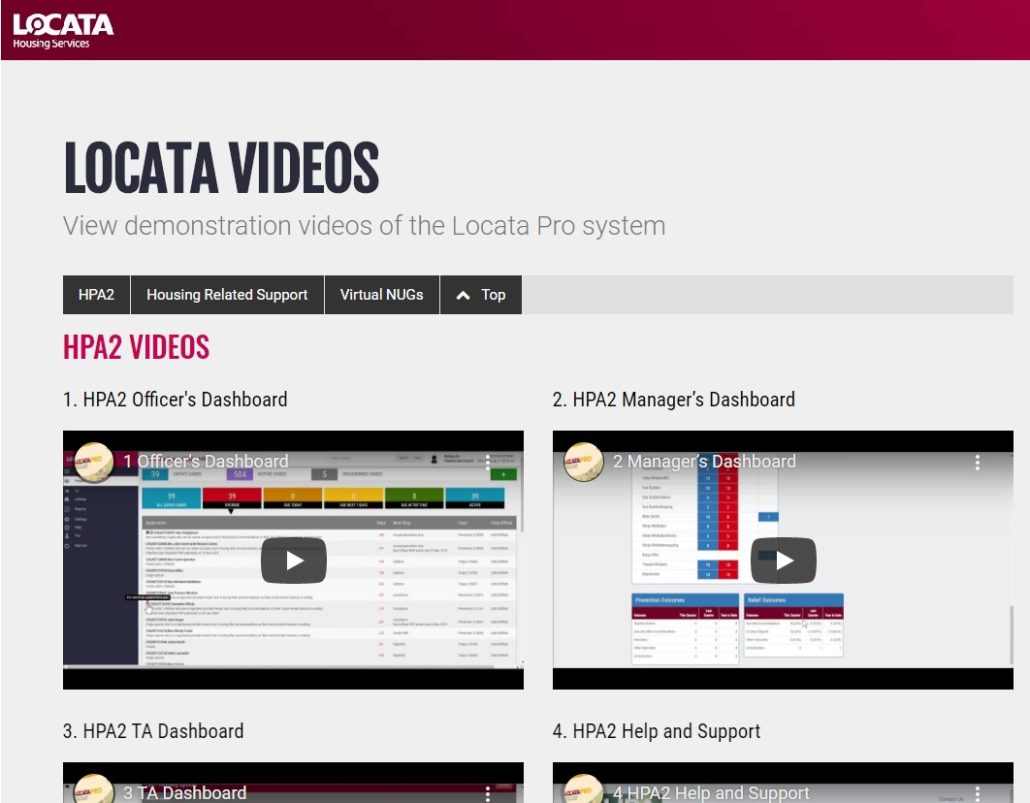With a Government commitment to level up the regions of the UK, we have scrutinised the White Paper: Planning for the Future for signs of opportunities for housing growth and renewal in the North.
The following brief summary of the proposals is no substitute for reading the 84-page document itself, as well as the accompanying consultation on changes to the current planning system, but it tries to set out how the proposals might work in Northern regions.
The NHC will be responding to the consultation on behalf of our membership – details of how to contribute to our response can be found at the end of this article.
The complex proposals fall under three key sections or pillars all underpinned with themes of community involvement, ‘beautiful’ design, modernisation, use of data, digital and the most important factor – speed, with planning being singled out, unjustifiably, as the cause of low build-out rates.
The first consultation question asks: “What three words do you associate most with the planning system in England?” There must be a hope in Government that replies includes the mantra ‘Build Build Build’ because the proposals are firmly rooted in the headline objective of delivering 300,000 new homes each year and a total of 1 million new homes by the end of the current Parliament.
The White Paper outlines 24 proposals with three Pillars and 26 consultation questions with the whole paper very much geared towards community involvement in planning.
Pillar One – Planning for Development
The headline concept in this section is the zoning of land, an approach intended to ensure enough land comes into the system over the Local Plan period – which will be reduced from 15 down to 10 years.
Land will be designated into three categories:
Growth areas (sites suitable for substantial development, which will have outline planning permission):
Renewal areas (sites suitable for development with an enhanced presumption in favour for the purposes identified in the plan); and
Protected areas, including Green Belt where, as the name suggests, development is restricted.
This aim is to establish a simpler framework with decisions determined by clear rules for what can and cannot be done.
The White Paper maintains a plan-led system but proposes to simplify Local Plans with maps used to outline where the three new development categories will be located, and with standardised development management policies outlined in a revised NPPF. In the process, the Sustainability Appraisal will be abolished, the Duty to Cooperate test will be removed and the deliverability assessment will be reduced. To support the transition a statutory duty is proposed for local authorities to adopt a new Local Plan by a specified date – either 30 months from the legislation being brought into force, or 42 months for local planning authorities who have adopted a Local Plan within the previous three years.
new nationally determined, binding housing requirement is proposed that local planning authorities would have to deliver through their Local Plans, applying a new standard methodology to divide up a national annual target of 300,000 homes. The White Paper states: “It may be appropriate for Mayors of combined authorities to oversee the strategic distribution of the requirement in a way that alters the distribution of numbers, and this would be allowed for.” It is not clear how this will be achieved in what will be a stream-lined plan preparation process.
Local communities will be consulted from the very beginning of the planning process by using online maps and data. Neighbourhood planning will be retained but it is not clear how this will be aligned with significant expectations on high volume development.
In Growth areas (suitable for substantial development) an outline permission for the principle of development would be conferred by adoption of the Local Plan. This light touch, fast-tracked system which grants automatic planning permission for a type of building within the designated zone places a great deal of weight on local design codes to uphold development standards and energy efficiency. Moving permission to the plan making stage will have the effect of reducing democratic oversight through planning committees.
The contribution of planning to the achievement of net zero is perhaps the biggest omission in the document. Tree-lined streets are almost the only nod to a green future for residential areas. There is far more emphasis in the document on the aesthetic appearance of a building than the carbon emissions generated from it. Yet, the planning and regulatory regime must be able to enforce at the outset the efficiency of a new building at the design stage.
While proposals for a zonal approach refers to flood risk, there is no mention of how zero carbon infrastructure will be treated within the different zonal areas. In designating land for development 10 years hence, councils will need to know where sites will be needed for renewable energy clusters now otherwise opportunities will be lost. The assumption is that local and national design codes, and national development management policy will address these critical issues.
Pillar Two – Planning for Beautiful and Sustainable Places
Pillar Two focuses on binding design codes and a planning system which is rooted in local preferences and character with potential use of “pattern books” for different building types.
“A fast-track for beauty” is promised through the NPPF. The Building Better, Building Beautiful Commission ‘Living with Beauty’ report should perhaps be read alongside the White Paper[1]. There will be a new design body and local authorities will have a chief officer for design and place-making.
This section references a commitment to net-zero by 2050 alongside meeting the Future Homes Standard by 2025. The Government has not yet issued a response to the Future Homes Standard consultation which closed on 7 February 2020. Greater clarity around this standard will be critical when the Government responds in the autumn.
Pillar Three – Planning for Infrastructure and Connected Places
The big news in Pillar Three is that the Community Infrastructure Levy (CIL) and the Section 106 planning obligations are to be replaced by a new nationally set Infrastructure Levy, which will be a fixed proportion of the scheme’s development value. Strategic Community Infrastructure Levies in combined authorities, “could be retained” as part of the Infrastructure Levy to support the funding of strategic infrastructure.
The new flat-rate charge would be set nationally at either a single rate or area-specific rates and would be charged on the final value of a development. The new levy will apply to permitted developments which will address some concerns, given that additional residential units create additional pressure on local infrastructure. But the onwards march of permitted development rights will give bigger concerns around the quality of housing with the White Paper seemingly disregarding the Governments own commissioned research showing that “only 22.1% of dwelling units created through PD would meet the nationally described space standards, compared to 73.4% of units created through full planning permission”.[2] The White Paper follows on the heels of new rules announced on 21 July, which will come into effect by September, meaning full planning applications will not be required to demolish and rebuild unused buildings as homes.
The Infrastructure Levy includes a value-based minimum threshold below which the levy is not charged, to prevent low viability development becoming unviable, reflecting average build costs per square metre. It is unclear how Northern local authorities should deliver infrastructure where values fall below the proposed threshold for the new Levy.
The proposal is to “sweep away months of negotiation of Section 106 agreements” however negotiations between developers and councils are one of the only ways social rented homes are built. Removing this route without certainly about the nature of replacement is potentially a hammer blow to the provision of social rented housing. The White Paper makes no mention of broader investment in social housing and provides no detail on the role of local authority-led housing delivery.
There are significant differences between regions in the value of affordable housing and other developer contributions with the Northern regions seeing the lowest value of planning obligations (including affordable housing) and CIL. The levy may give greater certainty over contributions but the way to regulate this between councils and developers without a Section 106 agreement to provide affordable housing and ensuring a mix of tenures, delivered to the right quality and in the right places, will be critical.
The provision of increased grant funding for genuinely affordable homes to rent may become all the more important.
Changes to the current planning system
A separate consultation document sets out proposals on changing the current planning system. The four main proposals are:
The standard method for assessing local housing need
This section states: “the Government has heard powerful representations that the current formula underestimates demand for housing in the growing cities in the Northern Powerhouse by being based on historic trends.” So far, so good.
The standard method, introduced in 2018 was flawed from the beginning, and undercut the aspirations of Northern authorities with ambitious growth plans.
A revised Standard Method will establish a nationally-set method for setting local housing requirements in effect distributing 300,000 homes per annum across local authorities, and it will be the responsibility of local authorities to allocate sufficient land for housing.
The big change is that the new method incorporates existing housing stock into the methodology, as a way of balancing out some of the issues identified from relying on household projections alone. This will help boost numbers in areas with low population projections as seen in some Northern areas.
The document states this change will mean a new national total of 337,000 homes a year as against 270,000 under the current approach.
The table below compares how the new proposed method stacks up against current local plans, recent housing delivery, and the current method.
| LPA |
Current
Local Plan Requirement |
Average Delivery (last 3 years) |
Current Standard Method |
Proposed new Standard Method |
| Cheshire, Greater Manchester, Merseyside |
10,048 |
20,427 |
17,134 |
18,668 |
| Central Liverpool |
1,414 |
4,833 |
3,414 |
3,439 |
| Great Manchester |
4,612 |
9,459 |
10,533 |
10,243 |
| Cumbria and Lancashire |
6,782 |
6,358 |
3,465 |
5,963 |
| North East |
5,237 |
10,095 |
6,262 |
7,288 |
| Yorkshire & Humber |
19,335 |
19,084 |
16,395 |
17,870 |
Source: Lichfields calculations based on proposed standard method paragraphs 23-39 of the consultation
The current Standard Method was never expected to be in place for long. It was clear at the outset that the methodology, using household projections in isolation, would boost the housing requirement in the South and East, while depressing it in the North contradicting wider economic policies such as the industrial strategy and Northern Powerhouse which aim to rebalance the UK economy.
The change won’t affect all local authorities equally but looks set to be more compatible with the objective of ‘levelling up’ the North, although still below the assessed level of need for the North.
First Homes
A minimum of 25% of affordable housing secured through developer contributions will be expected to be discounted market housing for first-time buyers. Government had already announced separately that it will begin making planning policy changes through the NPPF to deliver this policy. First Homes are now clearly expected to take priority over other forms of affordable home ownership. This could have a serious negative impact on the supply of affordable rent and social rent homes.
The response to the Government’s First Homes consultation showed that 47% of respondents thought that prioritising First Homes would have a detrimental effect on the delivery of other affordable housing tenures. 17% of respondents said regional disparities in land values need to be considered.[3]
It is vital that First Homes are provided alongside rather than instead of other types of affordable housing. This again emphasises the importance of other funding to support the provision of new affordable rented homes.
Supporting small and medium sized developers
To support SMEs in the medium term during economic recovery from Covid-19, the document proposes reducing the burden of contributions on SMEs for more sites for a time-limited period and there is encouragement for SMEs delivering MMC.
Permission in Principle
The document proposes that land allocated for substantive development in Local Plans should be automatically granted a form of permission of principle so that the principle of development is established, and subsequent consents only focus on detailed technical matters. This would also involve introducing a revised fee structure, at lower cost, to incentivise use.
Following this consultation, the Government aim to introduce amending regulations this Autumn, with the regulations expected to come into force by the end of the calendar year. Changes to the fee structure would require separate changes to the Planning Fees Regulations.
Resourcing local planning departments
All of the proposals pose an additional burden on local authorities. There will be an impact on funding for the preparation and review of Local Plans and design codes, digitisation and enforcement activities. Digitised plan-making will be expensive.
The White Paper states that for the Spending Review, “the Government will prepare a specific, investable proposal for modernising planning systems in local government” and, “we will also bring forward proposals later this year for improving the resourcing of planning departments more broadly.”
Research for the Northern Housing Consortium[4] shows that local authority housing and planning services in the North of England have been disproportionately impacted by reductions in capacity over the last decade.
The change in average net spend per local authority in the North between 2010/11 and 2018/19 stood at -54% for housing services; and -65% for planning and development services. Comparatively, across the rest of England, this difference stood at -34% for housing services and -50% for planning and development services.
This loss of capacity not only impacts on councils ability to secure local housing and planning ambitions, but also undermine the potential of achieving Government’s own housing ambitions.
There is a promise of “a comprehensive resources and skills strategy for the planning sector” but a reversal of the decline will need to happen before new skills and expertise can be developed.
It is paramount that the government provides sufficient resources to local authorities to administer the reforms. Without serious resourcing the reforms could slow down housebuilding and critical issues including decarbonisation and climate resilience will not be fully addressed.
What’s next
To make the best of the radical proposals, we need to make sure that the final process works for Northern councils, housing associations and ALMOs. This means that some consensus across the North about how the proposals can be sensibly be refined is needed.
The NHC will be responding to the consultation, and we welcome your views on the proposals.
- If you are interested in taking part in a roundtable discussion in September (date to be confirmed) please confirm your interest by email to brown@northern-consortium.org.uk
- If you are submitting your own response, please share your submission with us so that we can ensure our response reflects the views of our membership. It would be helpful to have this by 24 September 2020 (if replying to the ‘Changes to the current planning system’ consultation).
Of particularly interest in responding to the consultation would be your views on:
- Reform of Developer Contributions and the introduction of ‘the Infrastructure Levy’
- Changes to the standard method for assessing housing numbers in strategic plans
- Proposals for improving the resourcing of planning departments
- Impact of First Homes
How to respond:
MHCLG White Paper Planning for the Future is available here
The consultation closes on 29th October 2020
MHCLG Changes to the current planning system is available here
The consultation closes on 1st October 2020
If you wish to make an enquiry about the information contained in the article please contact Karen Brown 0191 566 1021 karen.brown@northern-consortium.org.uk
[1] The report of the Building Better, Building Beautiful Commission Living with Beauty January 2020
[2] Research into the quality standard of homes delivered through change of use permitted development rights UCL / University of Liverpool July 2020
[3] First Homes Summary of Responses to the Consultation August 2020
[4] Hincks, S. et al (2020 forthcoming) A view from the North : Understanding Local Authority Housing and Planning Capacity in an Era of Austerity. CaCHE, Sheffield.






